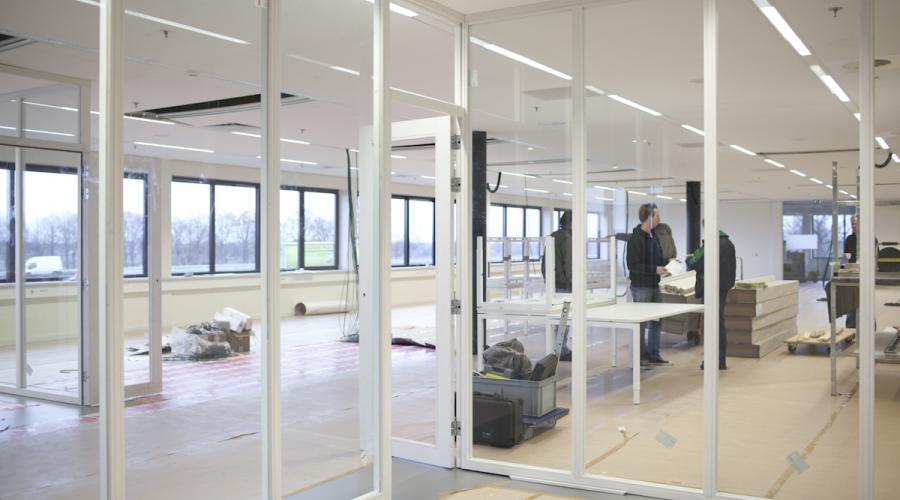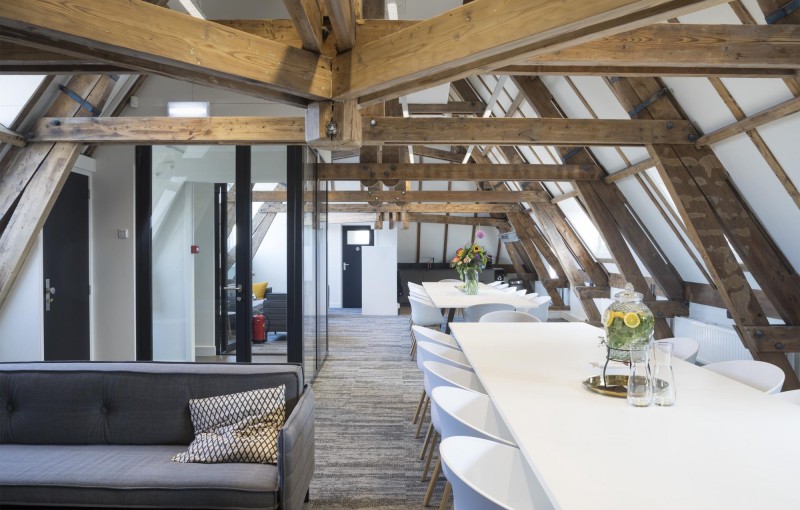
Tips for converting your office

During the start-up phase of your company, you already made the exciting choice to rent your first office space. However, in the meantime, your company has grown and as a result, your office is no longer adequate. And again, you are faced with an important choice: you can choose to move with your company to an office that better meets the current needs and requirements, or you can decide to grow (if possible) in the building where the company is already located and to renovate the office. A different office layout, improved office acoustics, or a new interior style - there are countless reasons to refurbish an office. But how do you go about it and what do you need to pay attention to? 5 useful tips.
1. Why do you want to renovate?
There are various reasons why office refurbishment is useful. This could be because the interior of the office no longer meets the contemporary requirements of office users, or perhaps many employees have started working flexibly over the course of time. Another reason could be that you need more or perhaps fewer square meters for your business.
It is important, prior to the renovation, to realize exactly what you want to change and how you are going to achieve this. These points should be central to the office refurbishment.
2. What do you need?
Just like converting a house, converting an office involves a lot of work. However, this depends entirely on your plans. If redecorating the office is sufficient, then you only need to look at the new office furniture that you need. Workstations, office chairs, desk lamps, plants, and so on. If you take a bigger approach, you may also need to take into account walls and ceilings, floors, paintwork, window coverings, and (sound) insulation. Work all this out neatly in a renovation plan, so that you can be sure of keeping an overview.
3. Who is going to do it?
An important planning point is the responsibility of the renovation. As long as it is not clear who will do what, it is better not to start. This lack of clarity will hamper the work in the office and ensure that the refurbishment takes a long time.
If you are involving external parties (e.g. a painter, upholsterer, removal firm or plasterer) in the refurbishment process, it is important that you also establish in the planning who your contact persons are and when each company will do something. But even if you do the renovation yourself, you should agree in advance who will help and who can put his work down for a while. Someone else may be able to take over some of the work.
4. Where do you start?
This is another planning point that becomes more important as the renovation plans grow. If you are only going to move some furniture, this is not a very problematic issue. However, if you also have to deal with painting, lighting and plumbing, it is important to coordinate these matters very well and to decide where it is best to start. This will ensure that the office refurbishment goes as smoothly as possible.
5. When does it have to be finished?
In order to minimise the disruption of the work at the office, it is a good idea to draw up a schedule. Where applicable, you do this together with all the parties involved. Together you coordinate the agendas and activities and plan an end date by which everything must be finished. It can of course happen that someone is ill or unable to work, but it is not the intention that the renovation takes six months or a year and that the company suffers as a result.
Of course, the more work that needs to be done, the greater the risk that something will go wrong with the planning. Make sure, therefore, that you allow for sufficient time for setbacks in major renovation projects.
We wish you every success and pleasure with your office refurbishment!
Related articles:
What is allowed in your rented office?
The surprising effects of using colour in an office


